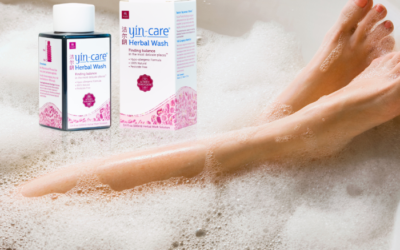5 Tips for Healthier Baking During the Holidays
The main ingredients in baked goods are typically flour, sugar, eggs, and butter. By reducing or eliminating some of these ingredients entirely and replacing them with alternatives that can provide fewer empty calories and more nutrients, it is, in fact, possible to enjoy these treats in good conscience! Of course, baking yourself is always the best way to go, as in this way you have full control over what goes into your treats. Here are five ways you can make your baking healthier …
1 Swap out eggs
Eggs are often used in baking. While they don’t contribute much flavor, their high protein and fat content help bind, leaven and thicken baked goods as well as increase the volume and richness. Eggs however are also loaded with cholesterol and saturated, and high intakes may increase the risk for chronic diseases, especially those of the heart and blood vessel. (1) A 2010 study in the Canadian Journal of Cardiology found that those who consume the most eggs have a 19 percent increased risk for cardiovascular problems. To put it in perspective: One egg contains more cholesterol than the body needs. (2) Eggs are also one of the main carriers of salmonella. Salmonella causes more hospitalizations and deaths than any other bacterial foodborne illness, and it’s a growing problem, with the number of cases now 44% higher than the late ’90s. (3)
Luckily there are several ways to replace eggs with healthier options. Depending on what you are baking:
By mixing 1 tbsp of chia or flax seeds with 3 tbsp of water, you will replace one egg. The reason this works is that the outer layer of the flax seeds is a mucilage, a gooey layer found in virtually all plants which aids in food and water storage. Flax and chia seeds also provide a good source of omega-3. (4)
- Mashed bananas work well where you don’t mind a banana flavor, like pancakes, muffins, and waffles. Bananas are a great source of fiber, and vitamins B and C, as well as potassium, calcium, manganese, and iron to name a few.
- Applesauce works the same way as mashed bananas, simply replace ¼ cup of mashed bananas or apple sauce for every egg, but never add more than 1 cup of applesauce in any recipe. Use unsweetened applesauce to minimize the sugar, or make your own by simply cooking down chopped, peeled apples with a little cinnamon and lemon juice. Apples, with their high fiber content and antioxidants, can help boost your immunity during the cold and flu season. (5)
- Baking soda and vinegar can be used in baked goods to provide fluffy, airy products. This option works best in cakes, cupcakes and quick bread. Use 1 tsp of baking soda mixed with 1 tbsp vinegar to replace one egg.
- Silken tofu can be used in place of eggs and provides no flavor. It produces a dense texture, so it’s best used in brownies and cakes. ¼ cup of tofu replaces 1 egg. Tofu is an excellent source of protein, iron and calcium and contains all 9 essential amino acids the body needs.
- Egg replacers such as Ener-G Egg Replacer, the VeganEgg or JUST Eggs can do a wonderful job to replace eggs both in sweet and savory dishes. Follow the instructions on the individual packages for how much to add to replace each egg.
- Aquafaba. This is the liquid you find in canned chickpeas or liquid left when cooking dried chickpeas. It is a wonderful alternative to egg whites and can be used to make meringues, macaroons, marshmallows and any other recipe that calls for eggs or egg whites.
2 Replace white sugar with natural sweeteners
White sugar is the epitome of empty calories, and present in many of the cookies, cakes, processed foods and even soups and bread that we buy. Too much white sugar can contribute to diabetes, heart problems and obesity. However, the sugar that is present in fruits, vegetables and whole grains digest more slowly, offering a steady supply of energy to your cells. (6)
Try replacing some of the white sugar with fruits like mashed bananas, applesauce, natural fruit juices, and dried dates. Dates contain fiber, potassium, copper, iron, manganese, magnesium and vitamin B6. Date sugar is considered a whole-food sweetener and more nutrient-dense than most other sugars.
Maple syrup, yacon syrup, and coconut palm sugar are both minimally processed, and better than heavily refined sugar. Blackstrap molasses is another good alternative that actually provides loads of nutrients: 2 tbsp (30ml) can provide as much as 400 mg of calcium, 7mg of iron, 1,200 mg of potassium and 200mg of magnesium. This is more calcium than 1 cup of milk, more iron than an 8-ounce steak and more magnesium than 1 cup of quinoa.
Regardless, intake of sugars should be minimized or used judiciously. (7)
3 Omit the flour and go for flourless cakes and cookies
Flour, particularly white flour, is another ingredient that provides little nutritional value as it has been stripped of its fiber and nutrients.
If you are going to use flour, try whole wheat, oat flour, rye flour, almond meal, brown rice flour, or millet flour. The best types of flour all around are those that are organic and sprouted. Plenty of recipes don’t require flour at all, like the recipe provided in this article. These are wonderful for those with gluten allergies, and typically provide more fiber, contain fewer calories, provide more satiety and are all-around more nutrient-rich.
4 Go raw
Raw foods are generally healthier as many nutrients get destroyed by cooking or baking. Don’t be fooled though; raw desserts are still sweets; however, they are typically free of, or minimize processed foods and are made with whole food ingredients. Fruits, nuts, and seeds are commonly used in raw desserts, which are all great sources of fiber, healthy fats, vitamins and minerals. (8) Raw foods avoid common allergens and are low in damaging dietary components and high in protective components. (9) This means choosing to eat raw automatically eliminates harmful antinutrients; dietary cholesterol, animal protein, refined sugars, trans fatty acids, artificial sweeteners, colors, and flavors. (10)
5 Replace or halve butter and oil in recipes
Butter and oil have little to no nutrients but contain a high amount of saturated fat and cholesterol. Margarine is more highly processed than oil, generally contains undesirable additives and often made with cheap oil or oils that are sourced is often unsustainable. (11) Use nut butter like almond, peanut or cashew butter, or applesauce, canned pumpkin and avocado instead of oil. Butter and oil are used to add moisture and richness to recipes, and by swapping these nutrient poor ingredients out with less processed alternatives, you can make your desserts a lot healthier.
*Bonus tip:
Swap out any dairy like milk, yogurt, and sour cream, and replace it with a plant-based alternative. There are loads of options for all of these on the market made from almonds, cashews, rice, macadamia, coconut and hemp to mention just a few. This way you will eliminate saturated fat and cholesterol, sugars and potential hormones and antibiotics hiding in these animal-based ingredients.
Flourless Almond Butter Chocolate Cookies
Makes about 16 cookies
- 1 cup smooth almond butter (or swap out for a seed butter or any other nut butter you enjoy)
- ½ cup date sugar
- 1 flax egg (1 tbsp ground flax seeds mixed with 3 tbsp water)
- 1 tsp baking powder
- ½ cup vegan, dark chocolate chips
Preheat oven to 350 degrees Fahrenheit. Prepare a baking sheet with parchment paper or a Silpat (silicone baking mat).
In a medium bowl whisk together the almond butter, date sugar, flax egg, and baking powder until well combined. Using a rubber spatula, fold in the chocolate chips last.
With a cookie dough scooper or tablespoon, place dollops of the batter onto the prepared cookie sheet and bake for about 10 minutes until the cookies are set. Remove from oven and place on a cooling rack and let sit for at least 30 minutes before diving in!
Resources:
1. Hever, Julieanna., MS, R.D., C.P.T., The Idiot’s Guide to Plant-Based Nutrition. New York: Penguin Group, Inc. 2011. Print
2. The Incredibly Inedible Egg, Physicians Committee for Responsible Medicine. November 21, 2014. Web. December 2, 2018.
3. Salmonella, Nutritionfacts.org. Web. December 1, 2018.
4. 7 Vegan Egg Substitutes for Baking. Plenteous Veg. July 15, 2018. December 2, 2018.
5. 14 Foods to Boost Your Immunity Now So You Can Stay Well During Cold and Flu Season. Food Revolution Network. October 24, 2018. Web. December 3, 2018.
6. The Sweet Danger of Sugar, Harvard Health Publishing. May 2017. Web. December 2, 2018.
7. Davis, Brenda, RD. and Melina, Vesanto, MS, RD, Becoming Vegan. Tennessee: Book Publishing Co., 2014. Print.
8. Raw Vegan Desserts vs Normal Desserts, Vikasa Yoga. Web. December 3, 2018.
9. Davis, Brenda, RD. and Melina, Vesanto, MS, RD, Becoming Vegan. Tennessee: Book Publishing Co., 2014. Print.
10. Hever, Julieanna., MS, R.D., C.P.T., The Idiot’s Guide to Plant-Based Nutrition. New York: Penguin Group, Inc. 2011. Print
11. Davis, Brenda, RD. and Melina, Vesanto, MS, RD, Becoming Vegan. Tennessee: Book Publishing Co., 2014. Print.

Sunny is a vegan lifestyle consultant, chef, wine educator and food blogger. She works with both private and corporate clients, helping people transition to a plant-based diet and vegan way of life, as well as operating as a consultant for restaurants and other food establishments who are looking to veganize their food menus and wine lists. Sunny is the wine director for Vegan Wines, the first vegan online wine club in the United States, and is passionate about animal advocacy. She lives in Beacon, NY with her husband and three dogs: Scooby, Tofu and Nacho. You can contact sunny by email sunny@sunnygandara.com.



